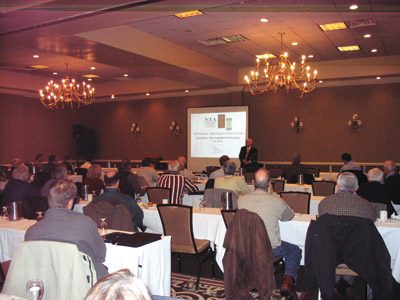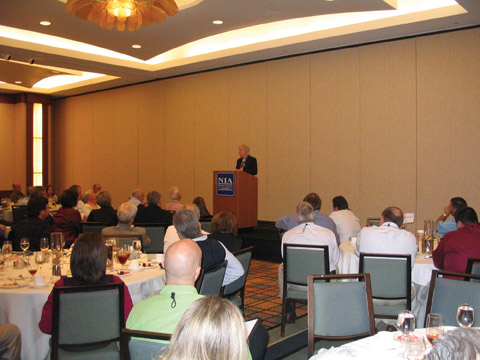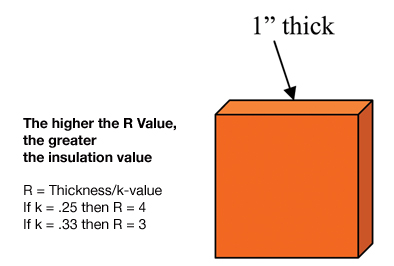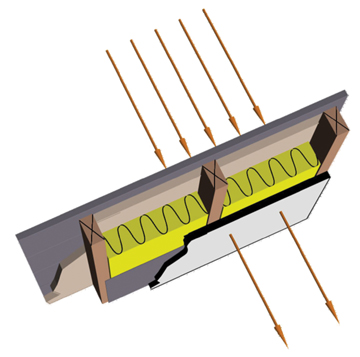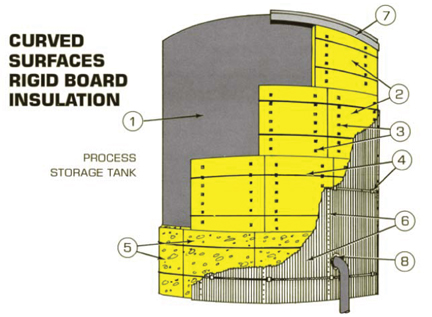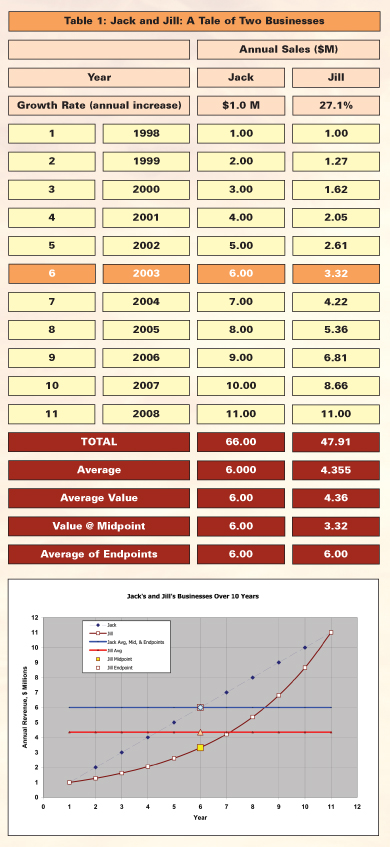The two following guides, “General Guidelines for the Repair of an Above-Ambient Insulation System after Substrate Inspection” and “General Guidelines for the Repair of a Below-Ambient Insulation System after Substrate Inspection” are excerpted from the Mechanical Insulation Design Guide (MIDG).
These guides are a distillation of accumulated knowledge and experience from industry experts. As part of MIDG, they were developed by NIA’s manufacturer, fabricator, and contractor members, as well as other organizations, to help engineers, architects, project managers, and facility owners ensure the integrity of their mechanical insulation systems after substrate inspections. Other organizations participating in the development of MIDG are:
- American Society of Heating, Refrigerating, and Air-Conditioning Engineers (ASHRAE)
- Architectural Computer Services Inc. (ARCOM-Masterspec)
- General Services Administration (GSA)
- Midwest Insulation Contractors Association (MICA)
- National Institute of Building Sciences (NIBS)
- North American Insulation Manufacturers Association (NAIMA)
- Oak Ridge National Laboratory (ORNL)
- United States Army Corps of Engineers (USACE)
- United States Department of Energy (DOE)
- United States Department of Veterans Affairs (VA)
- United States Naval Facilities Engineering Command (NAVFAC)
Failure to repair insulation after destructive testing can lead to corrosion under insulation, mold, and loss of efficiency for the system. Yet this critical and simple repair process is often overlooked. The guidelines in the following pages cover preparation, testing, and repair steps, as well as consideration of whether destructive testing is necessary in the first place. There are varying interpretations as to what constitutes ambient temperature depending on geographical area and the application environment, but generally normal ambient is considered 60ºF-70ºF.
For other detailed information about the design, specification, installation, and maintenance of mechanical insulation, visit the MIDG at www.wbdg.org/midg. To learn more about how the MIDG can help you with mechanical insulation design, see page 20.
General Guidelines for the Repair of an Above-Ambient Insulation System after Substrate Inspection
This guideline has been developed specifically for non-destructive testing of the substrate beneath insulation systems operating above ambient temperature. However, these same guidelines may also apply to other areas in need of repair.
The physical penetration of any intact insulation system is viewed as “destructive” and should be avoided if possible. Other forms of non-invasive inspection that do not require penetration of the insulation system should be investigated before proceeding with any procedure that requires penetration of the insulation system.
Consideration should be given to the potential need for penetrating the insulation system for substrate inspection in the insulation system design phase, and the locations of the inspection points should be identified. The insulation and weather barrier or protective covering manufacturers should be contacted for their recommendations for this procedure.
1. GENERAL CONSIDERATIONS
AND PREPARATION
1.1 Prior to penetrating the system and removing insulation, careful planning is required to ensure the inspection is as minimally invasive as possible.
1.2 Prior to removing or repairing the insulation system, verify the type of materials to be removed and/or repaired. If there are any questions pertaining to those materials, contact the manufacturer or others as necessary. Review the appropriate safety guidelines and work practices for the materials to be removed, repaired, and installed.
1.2 Contact the insulation and weather barrier/protective covering manufacturers for specific repair recommendations for the insulation system and operating conditions involved. If the system is operating during the inspection process, consideration should be given to specific personnel protection requirements.
1.3 Have proper tools, supplies, and sufficient replacement materials on hand to effect repairs to the insulation system immediately following the inspection. Ideally, the insulation should be removed immediately—15 minutes or less—before the inspection, and the repair procedure should begin immediately after the area of inspection is complete and be finished as soon as possible.
1.4 Repairs to the system are to be made using the same materials and insulation thickness used in the original system.
1.5 Repairs to the insulation system should be made by an experienced insulation contractor immediately after the inspection is completed.
1.6 Penetration of the insulation system should never be made during inclement weather or when inclement weather is anticipated before the repair can be completed.
1.7 If possible, penetration and repairs should be made while the operating systems for the areas in question are not in operation. Repairs made while a system is in service could be more difficult and may not yield the expected long-term results.
1.8 Penetration of the insulation system could void insulation system or material warranties, written or implied. The insulation contractor and material manufacturers should be contacted before proceeding with any invasive inspection process. In addition, failure to follow the recommended repair guidelines of the contractor, material manufacturers, etc., could also void any and all insulation system warranties, written or implied.
1.9 Penetrating above-ambient insulation systems, or any insulation system, and not properly and quickly repairing the area could damage an extended area of the insulation system, shorten the life of the insulation system, and create many other areas of concern such as, but not limited to, substrate corrosion, condensation, and safety-related issues.
1.10 Where possible, penetrations should be made on the bottom 180 degrees of all horizontal surfaces, and on the bottom if possible. If penetrations are made on the top of a vessel or other horizontal surface exposed to the elements, the additional risk associated with that penetration should be understood by all parties and care taken accordingly.
2. CONSIDERATIONS FOR INSULATION REMOVAL
2.1 Removal of insulation from the area to be inspected should be done by an experienced insulation contractor.
2.2 Care must be exercised during the insulation removal process to avoid damaging the insulation system beyond the minimum required for the inspection.
3. INSULATION SYSTEM REPAIR
3.1 The insulation system should be removed to the extent required to ensure all damaged insulation is removed. These guidelines are more readily employed if the system is not in service. The exposed edges of the remaining insulation should be cut or sanded to create a clean and straight edge.
3.2 Working outward on multi-layer insulation systems, remove an additional 2-inch-wide strip of insulation from successive insulation layers from around the perimeter of the inspection area so the repair joints will be staggered when the insulation is replaced.
3.3 Measure the exposed area and cut replacement insulation to fit the exposed area. The insulation should be tightly installed, friction fit when possible.
3.4 Just prior to replacement of the insulation, wipe the exposed area down with dry rags to remove as much dirt or other contaminants and/or condensation as possible.
3.5 If applicable, replace insulation finish with materials that match those used for the original installation and in a manner recommended by the finish manufacturer.
3.6 Perform a full inspection of the damaged area during the removal and replacement or repair process, as well as upon completion of the work, and make adjustments as necessary.
To access the MIDG, visit www.wbdg.org/MIDG.
General Guidelines for the Repair of a Below-Ambient Insulation System after Substrate Inspection
This Guideline has been developed specifically for non-destructive testing procedures of the substrate beneath insulation systems operating below ambient temperature. However, this same procedure may also apply to other areas in need of repair. This guideline does not apply to cryogenic applications.
The physical penetration of an intact below-ambient insulation system is viewed as destructive and should be avoided if possible. Other forms of non-invasive inspection that do not require penetration of the insulation system should be investigated before proceeding with any procedure that requires penetration of the insulation system.
Consideration should be given to the potential need for penetrating the insulation system for substrate inspection in the insulation system design phase, and the location of the inspection points should be identified and vapor stops applied on either side of the area to be penetrated. The manufacturers of the insulation material and vapor retarder should be contacted for their recommendations for this procedure.
1. GENERAL CONSIDERATIONS AND PREPARATION
1.1. Prior to penetrating the system and insulation removal, careful planning is required to ensure that the inspection is as minimally invasive as possible.
1.2. Contact the insulation and vapor retarder manufacturers for specific repair recommendations for the insulation system and operating conditions involved. If the system is operating during the inspection process, “water stops” should be installed as soon as the insulation is removed to ensure moisture/condensation does not run into the inside dimension (ID) of the remaining insulation. “Water stops” can be accomplished by several means: (a) Wrap insulation foam tape around the pipe, sealing off the ID of remaining insulation or (b) Adhere the remaining insulation to the substrate. This procedure should be confirmed with the insulation manufacturer.
1.3. Have proper tools, supplies, and sufficient replacement
materials on hand to repair the insulation system immediately following the inspection. Ideally, the insulation should be removed immediately (15 minutes or less) before the inspection, and the repair procedure should begin immediately after that area of inspection is complete and be finished as soon as possible.
1.4. Repairs to the system are to be made using the same materials and insulation thickness used in the original system.
1.5. For systems operating below 0°C (32°F), a deicer such as methanol may be needed to remove ice build-up if the repair is not done immediately. In addition to methanol, ethylene glycol, propylene glycol, and vehicle antifreeze can be used to remove or potentially prevent the formation of ice for a short period. Each of these materials has various environmental, health, and safety issues that should be considered prior to use. When using any of these materials, care should be taken to minimize contact with the remaining insulation system.
1.6. Repairs to the insulation system should be made by an experienced insulation contractor immediately after the inspection is completed.
1.7. Penetration of the insulation system should never be
made in inclement weather or when inclement weather is anticipated before the repair can be completed.
1.8. If possible, penetration and repairs should be made while the operating system for the area in question is not in operation. Repairs made while the system is in service are difficult and may not yield the expected long-term results.
1.9. Penetration of the insulation system could void insulation system or material warranties, written or implied. The insulation contractor and material manufacturers should be contacted before proceeding with any invasive inspection process. In addition, failure to follow the recommended repair guidelines of the contractor, material manufacturers, etc., could also void any and all insulation system warranties, written or implied.
1.10 Penetrating a below-ambient insulation system and not properly and quickly repairing the area could create dam-age to an extended area of the insulation system, shorten the life of the insulation system, and create many issues of concern such as, but not limited to, substrate corrosion, condensation, and safety-related issues.
1.11 All penetrations should be made on the bottom 180 degrees of all horizontal surfaces and on the bottom if possible.
2. CONSIDERATIONS FOR INSULATION REMOVAL
2.1. Removal of the insulation from the area to be inspected should be done by an experienced insulation contractor.
2.2. Care must be exercised during the insulation removal process to avoid damaging the insulation system beyond what is required for the inspection.
3. INSULATION SYSTEM REPAIR
3.1. If possible, the insulation system should be removed to the first insulation system joint. This procedure is more readily employed if the system is not in service. If not done during the removal, process cut or sand the exposed edges of the insulation to create a clean edge.
3.2. Working outward on multi-layer insulation systems, remove an additional 2-inch-wide strip of insulation from successive insulation layers from around the perimeter of the inspection area so the repair joints will be staggered when the insulation is replaced.
3.3. Measure the exposed area and cut replacement insulation to fit the exposed area. The insulation should be tightly installed, friction fit when possible.
3.4. Just prior to replacement of the insulation, wipe the exposed area down with dry rags to remove as much condensation as possible. If the substrate is iced up, apply deicer to remove the ice.
3.5. For totally adhered systems, replace the insulation and seal the joints using the adhesive recommended by the manufacturer.
3.6. For mechanically attached systems, replace the insulation and seal the joints using the sealant recommended by the manufacturer.
3.7. On multi-layer systems, the inner layers are replaced without joint sealant and the joints of the outer layer are sealed using the sealant recommended by the manufacturer.
3.8. If applicable, replace insulation finish with materials that match those used for the original installation and in a manner recommended by the finish manufacturer.
To access the MIDG, visit www.wbdg.org/MIDG.

